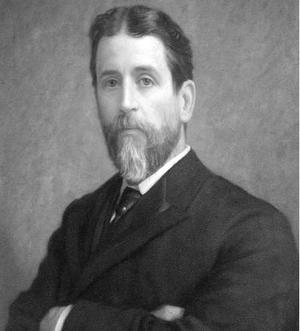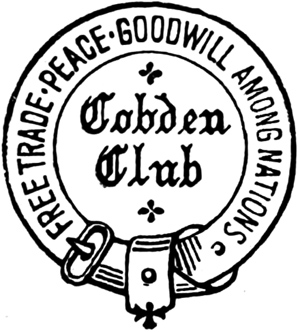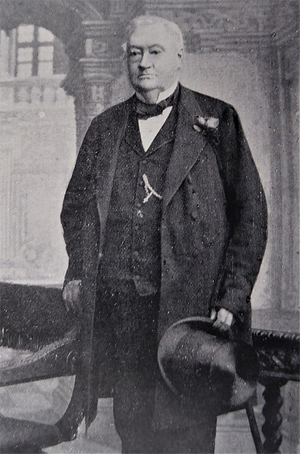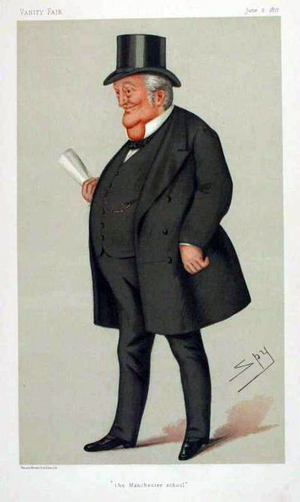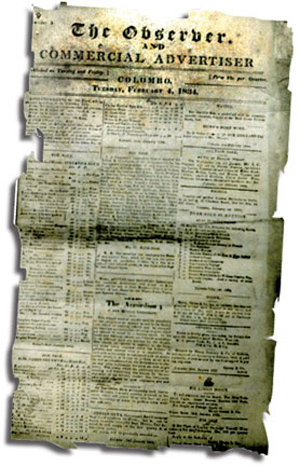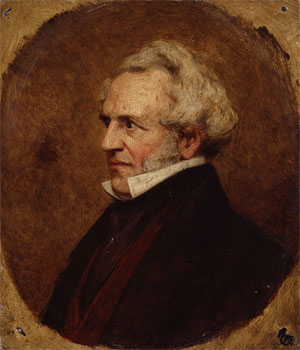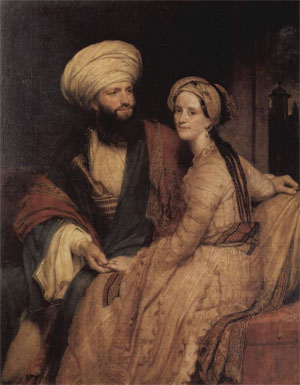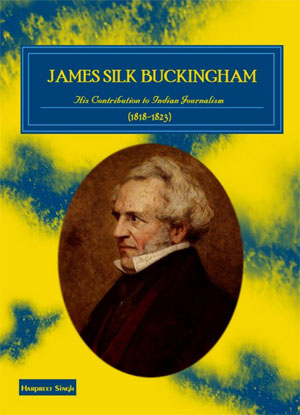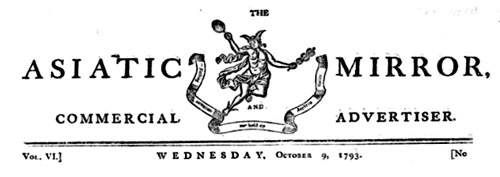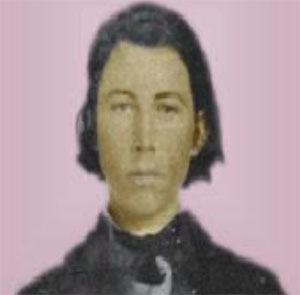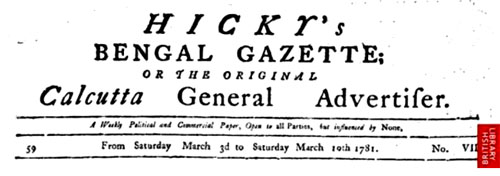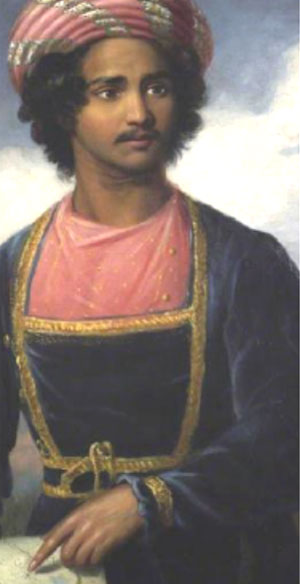Excerpt from Raja Ram Mohan Roy - biography of Muslim and Bengali
by Londoni Worldwide Limited
© Londoni Worldwide Limited
Christianity and the 'Maha Nirvana Tantra' (Book of the Great Liberation)
In 1792 the British Baptist shoemaker William Carey published his influential missionary essay 'An Enquiry of the obligations of Christians to use means for the conversion of heathens'. The following year Carey landed in India to settle. His objective was to translate, publish and distribute the Bible in Indian languages and propagate Christianity to the Indian peoples. He realised the "mobile" (i.e. service classes) Brahmins and Pundits were most able to help him in this endeavour, and he began gathering them. He learnt the Buddhist and Jain religious works to better argue the case for Christianity in the cultural context.
In 1795, Carey made contact with a Sanskrit scholar, the Tantric Hariharananda Vidyabagish, who later introduced him to Ram Mohan Roy, who wished to learn English. Ram Mohan began learning English in 1796 and took him six years to master it.
Between 1796 and 1797, the trio of Carey, Vidyavagish and Roy created a religious work known as the "Maha Nirvana Tantra" (Book of the Great Liberation) and positioned it as a religious text to "the One True God". Carey's involvement is not recorded in his very detailed records and he reports only learning to read Sanskrit in 1796 and only completed a grammar in 1797, the same year he translated part of The Bible from Joshua to Job, a massive task. For the next two decades this document was regularly augmented. Its judicial sections were used in the law courts of the English Settlement in Bengal as Hindu Law for adjudicating upon property disputes of the zamindari. However, a few British magistrates and collectors began to suspect and its usage (as well as the reliance on pundits as sources of Hindu Law) was quickly deprecated. Vidyavagish had a brief falling out with Carey and separated from the group, but maintained ties to Ram Mohan Roy...
Learning 'modern Tantric works' and Jainism in Rangpur
One of Ram Mohan's significant period was between 1809 -1814 when he was posted in Rangpur. There he studied 'modern Tantric works' with the aid of Hariharananda Vidyabagish and learnt about Jainism and studied the Jain texts from the Marwaris of Rangpur. Within two years of leaving Rangpur Ram Mohan would go on to publish a work on the Vedanta-sutra and find the 'Atmiya Sabha', the first of his societies with a religious object.
**************************************
Raja Rammohun Roy and the Status of Women in Bengal in the Nineteenth Century
https://openjournals.library.sydney.edu ... /7496/7872
Rammohun Roy like most boys of his generation and class received a very traditional education. He learnt Bengali and basic mathematics and then Persian perhaps at home with a munshi. It is not clear where and when he learnt Sanskrit and Arabic. It seems most likely that he learnt
Sanskrit from Hariharananda Tirthasvami. A friend and a tantrik Sadhu, Hariharananda profoundly influenced Rammohun's view of God and interpretations of the Upanishadas. I
***************************
Ram Chandra Vidyabagish [Ramachandra Vidyavagisa] [Brother to Hariharananda Vidyabagish [Hariharananda Tirthasvami]]
by Wikipedia
Accessed: 3/24/21
Ramchandra Vidyabagish (Bengali: রামচন্দ্র বিদ্যাবাগীশ) (1786 – 2 March 1845) was an Indian lexicographer and Sanskrit scholar. He is known for his Bangabhashabhidhan, the first monolingual Bengali dictionary, published in 1817. He taught at the Vedanta College established by Raja Rammohun Roy, and later at Sanskrit College from 1827-37. Closely associated with the work of Raja Rammohun Roy in Kolkata, he was the first secretary of the Brahmo Sabha established in 1828 and initiated Debendranath Tagore and 21 other young men into Brahmo Samaj in 1843. After Raja Rammohun Roy went to England, his unparalleled erudition and the devotional singing of Bishnu Chakraborti helped in the survival of the Brahmo Samaj.
References
Sengupta, Subodh Chandra and Anjali Bose (1988) (ed.) Sansad Bangali Charitabhidhan (Biographical dictionary) (in Bengali), Calcutta: Sahitya Sansad, p. 482.
*******************************
Ram Chandra Vidyabagish
by Wiki Data
Accessed: 3/24/21
Ramchandra Vidyabagish was an Indian lexicographer and Sanskrit scholar. He is known for his Bangabhashabhidhan, the first monolingual Bengali dictionary, published in 1817. He taught at the Vedanta College established by Raja Rammohun Roy, and later at Sanskrit College from 1827-37. Closely associated with the work of Raja Rammohun Roy in Kolkata, he was the first secretary of the Brahmo Sabha established in 1828 and initiated Debendranath Tagore and 21 other young men into Brahmo Samaj in 1843. After Raja Rammohun Roy went to England, his unparalleled erudition and the devotional singing of Bishnu Chakraborti helped in the survival of the Brahmo Samaj. Although he was opposed to Raja Rammohun Roy’s move to abolish the practice of sati, he extended support to Iswar Chandra Vidyasagar in his move for remarriage of widows. He spoke strongly against the system of polygamy, then prevalent in Hindu society, primarily amongst the Brahmins. He was associated with the Tattwabodhini Sabha and aimed at the advancement of Bengali language through it. He worked for some time on the government’s desire to replace Persian by Bengali as language of the courts. In this he had the active support of both David Hare and Prasanna Coomar Tagore. He strived hard for the use of Bengali as medium of education. He was the younger brother of Nandakumar Vidyalankar later Kulavadhuta Shrimad Hariharananda Tirthasvami, a wandering hermit, who had acquaintance of Raja Rammohun from his younger days. He was the worshipper of One True God according to the Mahanirvana Tantra.
1. Works
Vidyabagish compiled the first monolingual dictionary in Bengali in 1817 and was author of several books. His works include:
• Barnamala
• Shishusebadhi 1840
• Bangabhashabhidhan 1817
• Parameshvarer Upasana Bishaye Pratham Bakhyan
• Bachaspati Mishrer Vivadachintamanih
• Nitidarshan
• Jyotish Sangrahasar
• Rabindra Sarani Kolkata, India with Ram Chandra Vidyabagish as first resident superintendent. In November 1830, Ram Mohan Roy left for England, leaving
• worship on Chitpore Road now Rabindra Sarani Kolkata, India with Ram Chandra Vidyabagish as first resident superintendent. On 23 January 1830 or 11th Magh
• Girish Chandra Sen c. 1835 15 August 1910 was a Bengali religious scholar and translator. He was a Brahmo Samaj missionary and known for being the
• Devendranath Tagore with twenty followers accepted the Brahmo creed from Ram Chandra Vidyabagish on 21 December 1843 7 Poush 1250 according to the Bengali calendar
• Sarat Chandra Chattopadhyay, alternatively spelt as Sarat Chandra Chatterjee 15 September 1876 16 January 1938 was a Bengali novelist and short story
• Bipin Chandra Pal Bengali: ব প ন চন দ র প ল, Sylheti: ꠛ ꠙ ꠘ ꠌꠘ ꠖ ꠞ ꠙ ꠟ, pronunciation help info 7 November 1858 20 May 1932 was an Indian nationalist
• Vivekananda, Acharya Prafulla Chandra Ray, Keshub Chandra Sen, Acharya Jadunath Sarkar, Ram Manohar Lohia, Jagjivan Ram and many others who made immense
• Ishwar Chandra Vidyasagar CIE 26 September 1820 29 July 1891 born Ishwar Chandra Bandyopadhyay Ishshor Chondro Bondopaddhae was a Bengali polymath
• Nityananda Six Goswamis of Vrindavana Ramprasad Sen Raja Ram Mohan Roy Ram Chandra Vidyabagish Debendranath Tagore Keshub Chunder Sen Ramakrishna Sarada
• writings, and provided an inspiration for authors across India. When Bipin Chandra Pal decided to start a patriotic journal in August 1906, he named it Vande
• Krishna Chandra Bhattacharya, also known as K.C. Bhattacharya, 12 May 1875 11 December 1949 was a philosopher at the University of Calcutta known
• Chandra Ray also spelled Prafulla Chandra Ray and Prafulla Chandra Roy CIE, FNI, FRASB, FIAS, FCS Bengali: প রফ ল ল চন দ র র য Praphulla Chandra Rāy
• Akshay Chandra Sarkar Bengali: অক ষয চন দ র সরক র 11 December 1846 2 October 1917 was a poet, an editor and a literary critic of Bengali literature
• Keshub Chandra Sen Bengali: ক শবচন দ র স ন, Keshob Chondro Shen also spelled Keshab Chunder Sen 19 November 1838 8 January 1884 was an Indian Bengali
• Rai Bahadur Dinesh Chandra Sen Bengali: দ ন শ চন দ র স ন 3 November 1866 20 November 1939 was a Bengali writer, educationist and researcher of Bengali
• Raja Ram Mohan Roy 22 May 1772 27 September 1833 was one of the founders of the Brahmo Sabha, the precursor of the Brahmo Samaj, a social - religious
• Ishwar Chandra Gupta Bengali: ঈশ বরচন দ র গ প ত 6 March 1812 23 January 1859 was a famous Indian Bengali poet and writer. Gupta was born in Kanchrapara
• Sanjib Chandra Chattopadhyay Bengali: সঞ জ বচন দ র চট ট প ধ য য Sanjeeb Chondro Chottopaddhae 1834 1889 was a Bengali writer, poet and journalist
• Harish Chandra Mukherjee Bengali: হর শ চন দ র ম খ প ধ য য 1824 1861 was an Indian journalist and patriot, who fought for the indigo cultivators
• Hindu College, amongst his classmates were Rajnarain Bose and Gobinda Chandra Dutt father of Toru Dutt When Hindu College was opened, orthodox sections
• Bengali: স ব দ প রভ কর was a Bengali daily newspaper founded by Ishwar Chandra Gupta. It began as a weekly newspaper in 1831 and became a daily eight
• Brahmo Samaj, literally the Society of Brahma was founded as a movement by Ram Mohan Roy. In 1850 Roy s successor Debendranath Tagore broke from Hinduism
• Sib Chandra Deb Bengali: শ বচন দ র দ ব Shib Chondro Deb also spelt Shib Chandra Deb, Shibchandra Deb, Shib Chander Deb 20 July 1811 12 November
• outburst of Bengali literature. While Ram Mohan Roy and Iswar Chandra Vidyasagar were the pioneers, others like Bankim Chandra Chatterjee widened it and built
• Umesh Chandra Dutta also spelt as Umeshchandra Datta or Umes Chandra Dutta 1840 1907 was one of the pioneer Brahmos who firmly established the Brahmo
• movement, the Brahmo Samaj, in Bengal, India, and a close follower of Keshub Chandra Sen. He was a leading exemplar of the interaction between the philosophies
• Charu Chandra Bhattacharya Bengali: চ র চন দ র ভট ট চ র য 1883 1961 was a prominent science teacher and writer of various scientific articles mainly
• progressives within the organisation, including Keshub Chandra Sen, Sivanath Sastri, Sib Chandra Deb, and Durga Mohan Das, were together. Their thinking
• While a youngster he used to translate news items and features for Iswar Chandra Gupta s Sambad Prabhakar. He even studied in Medical College for some time
• be translated and understood at that time. Notable among them was Iswar Chandra Vidyasagar, who standardised the alphabets and paved the path for literary
*******************************
Remembering Rammohan: An Essay on the Re‐emergence of Modern Hinduism [Excerpt]
by Brian A. Hatcher
[...]
THE BRAHMO SAMAJ AFTER RAMMOHAN
In the wake of Rammohan's departure and death, the energy and activities of the Brahmo Samaj were severely weakened. "The death of the Founder was almost fatal to the infant society," remarked J. N. Farquhar in his influential early study of the period.54 Attendance dwindled at its weekly meetings. To those familiar with the association it must have seemed as if Rammohan's vision and his Samaj would both soon fade from memory. Such might well have been the case, were it not for the dedicated work of Rammohun's closest associates. None was more instrumental in keeping the Brahmo Samaj alive than Ramacandra Vidyavagisa (1786-1845). As first preceptor, or acarya, of the Samaj, Ramacandra had delivered the inaugural discourse before the Samaj in 1828. After Rammohan's departure he faithfully presided over weekly meetings, continuing to deliver discourses on the Upanisadic theology first enunciated by Rammohan. As one later Brahmo commented: "Only the faithful Ram Chandra Vidyabagish remained steadfast; and for seven years he regularly and punctually conducted the weekly service, as directed by Rajah Ram Mohun Roy, often alone like the solitary watcher by the dim-burning pyre at the burning ghat."55 We should note that the image evoked here is one of the death of a movement, rather than its birth. For the Brahmo Samaj to survive would clearly require the agency of men such as Ramacandra.
Like Rammohan, Ramocandra was a Brahmin by birth. Unlike Rammohan, he had trained as a Sanskrit pandit.56 However, his world was drawn close to Rammohan's in many ways, not least because Rammohan had studied under Ramacandra's older brother, who had renounced worldly life and become a tantric ascetic known as Hariharananda Tirthasvami. It may even be that Rammohan and Ramacandra met one another through Hariharananda.
Clearly the two formed a powerful intellectual friendship. Ramacandra's mastery of Sanskrit literature was a valuable asset to Rammohan. In fact, Rammohan sent Ramacandra to study Vedanta, which he is said to have mastered in very little time.57 Sources indicate Rammohan also gave Ramacandra funds with which to open a Sanskrit school for teaching Vedanta....
The creation of the Tattwabodhini Sabha was to become, in retrospect, a defining moment in Brahmo history. It has claimed the attention of readers of Bengali literature for over a century and a half. In the simplest of terms it is a story about the meeting of two men, Rammohan's old friend Ramacandra and Debendranath -- the latter anxiously seeking God, the former faithfully tending to the legacy of Rammohan. Their encounter would not only mark an upswing in the fortunes of the Brahmo Samaj, it would also contribute significantly to the areas of Bengali literature, social reform, and scientific learning. We can only summarize the story of the creation of the Sabha here.66...
It was at this point that Debendranath chanced upon a stray page of Sanskrit text. Although he had studied Sanskrit, he could not decipher it. He sought help from the family's pandit. Recognizing it as the kind of wisdom popular among the Brahmos, the pandit referred Debendranath to Rammohan's friend Ramacandra, When Ramacandra was shown the page, he was instantly able to identify the passage as the first verse of the Isa Upanisad.70 He read the passage for Debendranath and explained its meaning....
In a second major development, four months after the publication of the Patrika, Debendranath joined twenty-one other members of the Tattvabodhini Sabha in taking formal initiation (diksa) into the Brahmo Samaj. The old Brahmo stalwart Ramacandra presided over the ceremony as acarya. As Debendranath later wrote: "This was an unprecedented event in the annals of the Brahma-Samaj. Formerly there had existed the Brahma-Samaj only, now the Brahma Dharma came into existence."82...
******************************
Universal Worship, Part 2
by The Brown Struggler (GreenJayDeep)
Accessed: 3/24/21
In the year 1838, Devendra Nath Tagore, eldest son of Dwarka Nath Tagore, the friend and fellow-worker of Rajah Ram Mohun Roy, began to take interest in the Brahmo Samaj. As a boy, Devendra Nath had often seen Rajah Ram Mohun Roy and had been, in fact, a pet of his. It is said the Rajah foresaw the young boy would grow to carry on his own life-work. But, for many years, there was no sign of any religious tendency or interest in Devendra Nath. His early youth was like that of any other scion of wealthy families. In the year 1838, while attending on his grand-mother in her last moments at the burning-ghat, a strange feeling came over him: he experienced an indescribable joy in the felt presence of God. The pleasures and riches of the world appeared trivial to him. From that time a great change came over his life. He spent many days in meditation and felt that the idols they worshipped were not God, that God was one and could not be perceived by the senses. Then the memory of Rajah Ram Mohun Roy came back to him; he inquired about his Brahmo Samaj and sent for its Minister, Ram Chandra Vidyabagish.
Devendra Nath began to read the Upanishads under Ram Chandra Vidyabagish and established a society. the Tattwabodhini Sabha, for the study and diffusion of the ancient Theistic literature of India. This institution, which was at first composed of the brothers and cousins of Devendra Nath, began to expand rapidly. Ram Chandra Vidyabagish was appointed its minister; its anniversary was celebrated with great eclat in 1840. The Brahmo Samaj at this time was at the lowest ebb of its life. Fortunately, the Tattwabodhini Sabha came to its rescue at this juncture. The members resolved to take charge of it; the separate monthly service of the Tattwa Bodhini Sabha was discontinued and they began to attend the services of the Brahmo Samaj. Through their youthful energy and enthusiasm the Brahmo Samaj soon revived; and a period of great and growing activity followed. The faithful old Minister of the Brahmo Samaj, Pandit Ram Chandra Vidyabagish, had at last the satisfaction of seeing his devotion rewarded. But for his loyal perseverance, the sapling planted by Rajah Ram Mohan Roy might have perished in the dark days following the death of the founder.
The Brahmo Samaj now passed into the safe keeping of Devendra Nath. Drawn by his influence, many young men joined the Samaj. His active mind devised many new measures for the development of the Samaj.1 1842 the Tattwabodhfni Patrika was founded as the organ of the Brahmo Samaj, which exercised a very powerful influence over the rising generation of Bengal. The Brahmo Samaj, up to the time when Maharshi Devendra Nath Tagore joined it, was nothing but a motley congregation which occasionally met together in a half-serious, half-comical mood for listening to hymns, recitations from the Sanskrit Scriptures and religious discourses. There was neither any definite aim nor any settled conviction. The noble provision of the Trust Deed about the equal rights of all without regard to caste, creed or nationality was openly violated by disallowing the presence of non-Brahmins at the reading of the Vedas; doctrines about idolatry and incarnation were often preached from the pulpit. No sooner had Maharshi Devendra Nath joined the Brahmo Samaj than he turned his attention to rectifying these irregularities.
Institution of a Brahmo Covenant and Initiation: Under his influence and inspiration, it soon developed into a purely theistic congregation, He found that those who came to the service of the Brahmo Samaj were not inspired and animated by one common conviction. In their individual lives and at their homes they were idolaters as the ordinary Hindus. In order to make the Brahmo Samaj a body of men believing in the One God and worshipping Him in truth and spirit only, Devendra Nath drew up a Brahmo covenant containing a number of vows enjoining the renunciation of idolatry, the worship of the One Only in the Vedanta and the practice of virtue. God as described Devendra Nath himself took the lead in being initiated into Brahmoism by Ram Chandra Vidyabagish by signing this Covenant in Dec. 1843; twenty of his friends followed him in this new and momentous departure, Thus was formed the nucleus of a Brahmo community; and by 1874 the number of covenanted Brahmos rose to 767.
****************************
Liturgy of the Brahmo Samaj
by the brahmosamaj.net
Accessed: 4/24/21
In this section we look in detail into the liturgy of the Brahmo Samaj. This liturgy has evolved through the ages.
During the time of Rammohun Roy, two Telegu Brahmins used to recite the Vedas in a side room screened from the view of the congregation - where non-Brahmins were not admitted. Utsabananda Vidyabagish would read the texts of the Upanishads -- which were later explained in Bengali by Pt. Ram Chandra Vidyabagish. Then he would give a sermon followed by a song by Govinda Mala. Several of these sermons were written by Rammohun himself. The universalist nature of Rammohun's new religion was evident in reciting the sruti texts of the Upanishads in front of non-Brahmins. The pundits reciting these texts were free from the orthodoxy of their Telegu counterparts.
The first great revival of the Brahmo Dharma took place under the leadership of Debendranath Tagore (1817 - 1905). The Brahmo Samaj as an organisation had gradually reached a moribund condition after Rammohun departed for England. Under Debendranath and the Tattwabodhini Sabha rituals and ceremonials of the new church were formulated. Debendranath wrote the Brahmo Dharma in 1848 at the age of 31. He dictated it to Akshay Kumar Datta and it took 3 hours to write the first part. The most prominent was the system of Initiation (Diksha). A notable doctrinal change that took place was the abandonment of the belief in the infallibility of the Vedas. It was declared that the basis of Brahmoism would henceforth be no longer any infallible book but "the human heart illuminated by spiritual knowledge born of self - realisation." Spiritually Debendranath laid more emphasis on bhakti or devotion rather than jnana or knowledge as propagated by Rammohun. He qualifies his Brahman with a number of personal attributes making thereby a near approach to Ramanuja's doctrine of Visistaadvaitabad. He was temperamentally averse to any drastic measure in the sphere of reform work which might defeat the purpose by causing an abrupt break with tradition.
The next phase is dominated by the dynamic personality of Keshub Chandra Sen (1838 -1884). He also introduced extempore prayers and speeches from the pulpit rather than fixed stereotyped liturgy. Codification of the doctrines came with the main principles of the Nava Samhita - the New Dispensation. These were as follows: 1) Harmony of all scriptures, saints, and sects. 2) Harmony of reason and faith, of devotion and duty, of yoga and bhakti. 3) The church of the Samaj stands for One Supreme God, to be worshipped without form. No idolatry in any form may enter the precincts of the church. 4) The church stands for universal brotherhood without distinction of caste or creed or sect. Texts from all world religions were used for prayer and worship. Keshub propagated a general theory of revelation in which he included nature, history, by which he means "great men," and inspiration. He clearly emphasized inspiration, as the most direct and significant form of revelation. He described it as "the direct breathing-in of God's spirit - which infuses an altogether new life into the soul, and exalts it above all that is earthly and impure. It is more powerful, being God's direct and immediate action on the human soul while revelation made through physical nature and biography is indirect and mediate".
In the era of Sadharan Brahmo Samaj, led by Sivanath Shastri and Ananda Mohun Bose, the liturgy gave a rational, monistic interpretation of the Upanishads, admitting the essential unity of the universal self and the individual self.
****************************
RAM CHANDRA VIDYABAGISH
by Project Gutenberg Self-Publishing Press
Accessed: 3/24/21
Ramchandra Vidyabagish (Bengali: রামচন্দ্র বিদ্যাবাগীশ) (1786 – 2 March 1845) was an Indian lexicographer and Sanskrit scholar. He is known for his Bangabhashabhidhan, the first monolingual Bengali dictionary, published in 1817. He taught at the Vedanta College established by Raja Rammohun Roy, and later at Sanskrit College from 1827-37. Closely associated with the work of Raja Rammohun Roy in Kolkata, he was the first secretary of the Brahmo Sabha established in 1828 and initiated Debendranath Tagore and 21 other young men into Brahmo Samaj in 1843. After Raja Rammohun Roy went to England, his unparalleled erudition and the devotional singing of Bishnu Chakraborti helped in the survival of the Brahmo Samaj.
Although he was opposed to Raja Rammohun Roy’s move to abolish the practice of sati, he extended support to Iswar Chandra Vidyasagar in his move for remarriage of widows. He spoke strongly against the system of polygamy, then prevalent in Hindu society, primarily amongst the Brahmins.
He was associated with the Tattwabodhini Sabha and aimed at the advancement of Bengali language through it. He worked for some time on the government’s desire to replace Persian by Bengali as language of the courts. In this he had the active support of both David Hare and Prasanna Coomar Tagore. He strived hard for the use of Bengali as medium of education.
He was the younger brother of Nandakumar Vidyalankar (later Kulavadhuta Shrimad Hariharananda Tirthasvami), a wandering hermit, who had acquaintance of Raja Rammohun from his younger days. He was the worshipper of One True God according to the Mahanirvana Tantra.
WORKS
Vidyabagish compiled the first monolingual dictionary in Bengali in 1817 and was author of several books. His works include:
Bangabhashabhidhan (1817)
Jyotish Sangrahasar
Bachaspati Mishrer Vivadachintamanih
Shishusebadhi (1840)
Barnamala
Nitidarshan
Parameshvarer Upasana Bishaye Pratham Bakhyan
Sengupta, Subodh Chandra and Anjali Bose (1988) (ed.) Sansad Bangali Charitabhidhan (Biographical dictionary) (in Bengali), Calcutta: Sahitya Sansad, p. 482.
*************************
https://www.google.com/books/edition/A_ ... frontcover
For writers not steeped in these notions, by contrast, such as Mrityunjay Vidyalankar, whose 1808 history of Bengal was commissioned by Fort William College ...
*************************
Fort William College [East India College Calcutta]
by Wikipedia
Accessed: 12/15/19
...
Languages
The College of Fort William emerged as both a centre of research and a publication unit, a cradle of creativity as well as scholarship. Planned originally to train probationer British civilians in the languages and cultures of the subjugated country, the college rendered services tantamount to those of a university in promoting modern Indian literatures, Bengali in particular… Under the leadership of William Carey, the College could also claim credit for drawing together Sanskrit pandits and Perso-Arabic munshis to reshape Bengali prose… The variety of the College’s publication also deserve note. From colloquies and popular stories, chronicles and legends, to definitive editions of literary texts.[2]
-- Majumdar, Swapan[3]
Fort William College aimed at training British officials in Indian languages and, in the process, fostered the development of languages such as Bengali and Urdu.[4] The period is of historical importance. In 1815, Ram Mohan Roy settled in Calcutta. It is considered by many historians to be the starting point of the Bengali Renaissance.[5]:212 Establishment of The Calcutta Madrassa in 1781, the Asiatic Society in 1784 and the Fort William College in 1800, completed the first phase of Kolkata’s emergence as an intellectual centre.[2]
Teaching of Asian languages dominated: Arabic, Urdu, Persian, Sanskrit, Bengali. Later, Marathi and even Chinese were added.[6] Each department of the college was staffed by notable scholars. The Persian department was headed by Neil B. Edmonstone, Persian translator to the East India Company's government since 1794. His assistant teacher was John H. Harington, a judge of Sadar Diwani Adalat and Francis Gladwin, a soldier diplomat. For Arabic studies, there was Lt. John Baillie, a noted Arabist. The Urdu department was entrusted to John Borthwick Gilchrist, an Indologist of great repute. Henry Thomas Colebrooke, the famous orientalist, was head of the Sanskrit department. William Carey, a non-civilian missionary and a specialist in many Indian languages, was selected to head the department of vernacular languages.[7] While notable scholars were identified and appointed for different languages, there was no suitable person in Calcutta who could be appointed to teach Bengali. In those days, the Brahmin scholars learnt only Sanskrit, considered to be the language of the gods, and they did not study Bengali. The authorities decided to appoint Carey, who was with the Baptist Mission in Serampore. He, in turn, appointed Mrityunjoy Vidyalankar as head pandit, Ramnath Bachaspati as second pandit and Ramram Basu as one of the assistant pandits.[8]
Along with teaching, translations were organized. [b][size=110]The college employed more than one hundred local linguists.[6] There were no textbooks available in Bengali. On 23 April 1789, the Calcutta Gazette published the humble request of several natives of Bengal for a Bengali grammar and dictionary.[8]...
Fort William College was served by a number of eminent scholars. They contributed enormously towards development of Indian languages and literature. Some of them are noted below:
• William Carey (1761–1834) was with Fort William College from 1801 to 1831. During this period he published a Bengali grammar and dictionary, numerous textbooks, the Bible, grammar and dictionary in other Indian languages.[11]:112
• Matthew Lumsden (1777–1835)
• John Borthwick Gilchrist (June 1759 – 1841)
• Mrityunjay Vidyalankar (c. 1762 – 1819) was First Pandit at Fort William College. He wrote a number of textbooks and is considered the first 'conscious artist' of Bengali prose.[12] Although a Sanskrit scholar he started writing Bengali as per the needs of Fort William College. He published Batris Singhasan (1802), Hitopodesh (1808) and Rajabali (1808). The last named book was the first published history of India. Mrityunjoy did not know English so the contents were possibly provided by other scholars of Fort William College.[8]
• Tarini Charan Mitra (1772–1837), a scholar in English, Urdu, Hindi, Arabic and Persian, was with the Hindustani department of Fort William College. He had translated many stories into Bengali.[11]:196
• Lallu Lal (also spelt as Lalloolal or Lallo Lal), the father of Hindi Khariboli prose, was instructor in Hindustani at Fort William College. He printed and published in 1815 the first book in the old Hindi literary language Braj Bhasha, Tulsidas’s Vinaypatrika.[4]
• Ramram Basu (1757–1813) was with the Fort William College. He assisted William Carey, Joshua Marshman and William Ward in the publication of the first Bengali translation of the Bible.[4]
• Ishwar Chandra Vidyasagar (1820–1891) was head pandit at Fort William College from 1841 to 1846. He concentrated on English and Hindi while serving in the college.[11]:64 After discharging his duties as academician, and engagements as a reformer he had little time for creative writing. Yet through the textbooks he produced, the pamphlets he wrote and retelling of Kalidasa’s Shakuntala and Shakespeare’s A Comedy of Errors he set the norm of standard Bengali prose.[2]
• Madan Mohan Tarkalankar (1817–1858) taught at Fort William College. He was one of the pioneers of textbook writing.[11]:391
****************************
Mrityunjay Vidyalankar (c. 1762 – 1819)
Excerpt from Calcutta School-Book Society [Calcutta Book Society]
by Wikipedia
viewtopic.php?f=60&t=4204&p=35345#p35345
Mrityunjay Vidyalankar (c. 1762 – 1819) was a pundit and scholar, born in Midnapore district and studied initially in Natore district,[2] now in Bangladesh and also in Calcutta. He was fluent in both Sanskrit and Bengali and after being recommended by Sir William Carey, one of the foremost Protestant missionaries to have come to India in the early 19th century, joined the Department of Bengali at Fort William College as the head pundit. He was appointed professor of Sanskrit in 1805, four years after he joined the college. In 1813 he resigned from his job and signed himself under Justice Sir Francis Mackonton as a judge pundit. He was a committee member that was constituted to formulate the rules for the Hindu College in 1816 before becoming the member of the governing body of the Calcutta School-Book Society in 1817.
*************
Mrityunjay Vidyalankar
by Banglapedia
Accessed: 3/24/21
বাংলা
Mrityunjay Vidyalankar (c 1762-1819) linguist and writer, was born in Medinipur district, at that time in the province of Orissa, later in West Bengal. He studied at the court of the raja of natore and turned into a Sanskrit scholar. Although not known where he studied Bangla, he made his name as the best Bangla prose writer during the first two decades of the nineteenth century.
On the recommendation of William Carey, he was appointed as the head pundit in Bangla Department at the Fort William College on 4 May 1801. Later in 1805, again on Carey's recommendation, he was given the responsibility of the head pundit in Sanskrit Department. He worked at this college until July 1816, when he resigned his post and worked for the Chief Justice of the Supreme Court, as his judge-pundit.
It was not because he published more books than any of his contemporary Bengali colleagues, but because of his prose style that he became so distinguished a writer; according to many, the best before ishawar chandra vidyasagar. Although his style was highly Sanskritised, he found the right and rhythmic structure of Bangla sentences with proper collocation, syntax and correlation of words. More significantly, in that formative stage, he played a vital role in shaping Bangla prose style giving it a formalised character, and thus, distancing it from spoken Bangla. He also persuaded Carey and his other Bengali colleagues to avoid, and even discard, Arabic and Persian elements, widely used in Bangla at that time, and to use more Sanskrit words instead. Consequently, he changed the whole course of Bangla prose style for the rest of the century. He wrote Batrish Singhasan (1802), Hitopadesh (1808), Rajabali (1808) and Prabodhachandrika (written in 1813, printed in 1833). He also wrote Vedantachandrika (1817). Even though these books are mainly translations from Sanskrit works, they acquired an originality because of his style.
As a sanskrit scholar he perceived as conservative in his social outlook, but he was, indeed, in some linguistic matters a modern man. He wrote against the practice of sati even before rammohun roy. When the latter first published his pamphlet in favour of banning the custom, he cited the same shastric endorsement as Mrityunjay had done earlier. He died in early June 1819. [Ghulam Murshid]
****************************
History of Bengali
By Sanjeev Nayyar
1818 to 1905
Growth of Bengali Prose - As noted above there was no prose literature in B before the 19th century. The history of B prose literature started with the foundation of Fort William College in Calcutta in 1800 a.d. The college was established with a view to training the officials of the East India Company in the different languages of the country. It had a B section headed by Willaim Carey with eight teachers under him.
Carey felt very keenly the lack of textbooks so the authorities encouraged the teachers to come out with B books. A large number of books were composed by authors in the first ten years some of whom are Ramran Basu, Rajib-lochan etc. The most eminent was Mrityunjay Vidyalankar, four of whose works were published in 1813. For the first time he developed an artistic literary style and fully deserved to be called the ‘Father of Bengali Prose’. The credit is usually given to Raja Ram Mohan Roy but his first book was published in 1813. He made a contribution nevertheless but cannot be regarded as a pioneer in the field of B prose literature.
The early B books were mostly translations from Sanskrit, English and Persian but there were three original compositions all of historical character. Ramran basu and Rajib-lochan wrote the lives of Pratapaditya and Krishna-chandra Ray while Mrityunjay Vidyalankar wrote a history of India from the earliest period to the time of Warren Hastings.
Carey too made a significant contribution to the language. He composed a grammar of B literature in 1815 and a B-English dictionary in 1815. Another book written by him was Itihasamala or a collection of stories. On the whole the contribution of Carey to B prose is very great indeed. The following passage from the Introduction to his Bengali Grammar shows his appreciation of the B language –
“The Bengalee may be considered as more nearly allied to Sanskrit than any of the other languages of India, four-fifth of the words in the language are pure Sanskrit. Words may be compounded with such facility, and to do great an extent in Bengalee, as to convey ideas with the utmost precision, a circumstance which adds much to its copiousness. One these, and many other accounts, it may be esteemed one of the most expressive and elegant languages of the East”. Carey has rightly pointed out that B was more allied to Sanskrit than other Indian languages. One of its effects was the close imitation of Sanskrit prose style by B writers. Vidyashankar adopted Sanskritized style in some of his books to be followed by others later.
By doing so (looking to Sanskrit for sustenance & development) the authors of those times did a great service to B language which was saved from the dominating influence of Persian and Arabic, something that Hindi could or has not been able to avoid. While the language was thus remodeled and simplified, the B writers drank deeply at the fountain of English literature, which was gradually becoming accessible to them due to the spread of English education.
The first manifestation of the new spirit was the growth of B periodicals starting 1818. Three papers Bangal Gejeti (weekly Bengal gazette, did not last for than a year), monthly journal named Digdarsana and a weekly called Samachara-darpana (mirror of news). The last two were brought out by the Baptist missionaries of Serampore. Atleast seven other B periodicals were started between 1820 to 1850. These periodicals have historical value, people and life of that time, how people were waking up from a thousand years of slumber to enter into a new world.
They were also landmarks in the development of B language and literature. It became gradually free from Sanskrit compounds, which rendered it possible for masters like Bankim-chandra Chatterjee and Rabindranath Tagore to transform it into one of the most beautiful and highly developed languages of the world.
The Samachara-darpana got increasingly popular with time. It published news of what was happening in other countries especially England. From an historical perspective it is important because India’s downfall started when as a cultural unit it reduced its contact with the outside world – went into a shell. Towards the closing centuries of Hindu rule this is exactly what happened. Al-Biruni noted this as a great defect in the character of Indians as far back as 1030. Unfortunately there was no improvement on this count during the Muslim rule. It was left to the Brits to do so then. Today in 2002 it is the Internet and World Wide Web that has helped Indians connect / communicate as never before.
Poetry - While the B prose style was of recent growth, B poetical literature has a long history before the 19th century. However, most of the works were based on religious themes. The last great master of poetic styles that came into style in the 18th century was Dasarathi Ray 1806-57, best known for his spontaneity of diction and smiles.
The first poet to break a new ground was Iswardas Gupta 1812-59 who wrote poems on social and political themes and translated English verses. He was part old and part new school. The first great poet of the new school was Madhu-sudan Datta 1824-73 who brought about an epoch-making change in the form and spirit of B poetry. He introduced blank verses and his epic Meghanada-vadha-kavya breathes a new spirit. He used Indian themes but treated them in a distinctly European way. In his Vrajangana-kavya, based on the Radha-Krishna story he caught the depth of the old Vaishnava poets but in his own way.
Rangalal Banerjee 1827-87 wrote some poems on Rajput chivalry and other historical themes. Two of the greatest poets after Shri Datta referred to above were Hem-chandra Bandyopadhay 1838-1903 and Nabin-chandra Sen 1847-1909. The former is better known for his patriotic poems inspired by fervent nationalism. The latter is the author of a triology of epic poems, giving a new interpretation to the life and message of Sri Krishna. His best-known work is Palasir Yuddha based on the decisive Battle of Plassey. This epic and many short poems breathe a fervid sense of patriotism.
The next phase of development was the romantic poems, which began with Biharilal Chakravarti 1835-94 and culminated in Rabindranath Tagore.
Novels - The B novels, inspired as it were by English novels, did not reach the heights of excellence of B poetry. The greatest writer in this field was Bankim-chandra Chatterji 1838-94 whose first novel Durgesa Nandini was published in 1865. It heralded a new style in B literature for two reasons. One he introduced a new style of B prose that continued throughout the 19th century. Two he simplified the language and removed difficult Sanskrit words.
Bankim’s novels showed an astounding vigor of the present B language, combined with beauty and simplicity. They also revealed a new world of romance and idealism. He showed for the first time that the ordinary life of a middle class B can be a subject matter of a high class novel, and that religious / social views can be preached through novels without detriment to their artistic merit. Some of his novels were translated into English. What Bankimji did most importantly was to revive amongst Bengalis pride in their own literature. Besides novels he wrote religious treatise and essays on a variety of subjects. His Ananda-math (Abbey of Bliss) which contains the famous song Vande Mataram has attained all India fame on account of its patriotic fervor in the form of a quasi-historical romance. While Bankimji was influenced by European thought and literature his originality is beyond question. For half a century he remained the uncrowned king of Bengali literature.
Drama - It was only in 1831 that Prasanna-kumar Tagore set up the first B stage. However, the first public stage was enacted in 1872. It was named National Theatre. These performances led to the development of B drama.
Here again Madhu-sudan Datta’s play Krishnakumari based on the story of the princess of Udaipur and several comedies exposing social abuses were works of high order. The next dramatist Dinabandhu Mitra 1830-73 also showed great dramatic powers. His drama Nila-darpana that exposed the oppressions of indigo-planters created a sensation at that time. Rajakrishna Ray 1849-94 wrote on a number of dramas on Puranic themes and introduced the regular free verse – remarkable innovation in B dramas. Another playwright was Giris-chandra Ghosh 1844-1912 raised the genius of B dramas to a high level. There were other dramatists too.
Others - There were a number of stalwarts who wrote on a variety of subjects during this period. There was Keshab Chandra Sen, Sri Ramakrishna, Swami Vivekananda. When Rabindranath made his debut various branches of B literature had already attained a position of eminence. Poems, novels, short stories, dramas, satire, autobiography and essays of all kinds is where Tagore contributed to. But he was a real pioneer in lyric poems, in songs in the modern spirit and in short stories.
Before we conclude this period it is important to emphasize the debt, which B prose literature owes to English literature and Western ideas. One of the serious charges levied against English literature was that vernacular literature has suffered. In this case the fact remains the B literature attained the highest development in Bengal where English education was the most advanced. We may contrast this with Bombay, Madras and other parts of British India where the main stress was on vernaculars and not on English, as in Bengal. Having said that if we were to look at India in 2002 regional languages have suffered because of the importance given to the learning of English language. I see most parents today speaking to their children in English rather than in their mother tongues. I am not suggesting that we do not learn English but not at the expense of our mother tongue.
****************************
https://is.muni.cz/el/1423/jaro2016/SOC ... en;htmle=1
editors
Sherry B. Ortner, Nicholas B. Dirks, Geoff Eley
THE NATION AND ITS FRAGMENTS
titles
A PURANIC HISTORY
The first three books of narrative prose in Bengali commissioned by the Fort William College in Calcutta for use by young Company officials learning the local vernacular were books of history, Of these, Rdjabali (1808) by Mrityunjay Vidyalankar was a history of India—the first history of India in the Bengali language that we have in print.7 Mrityunjay (ca. 1762-1819) taught Sanskrit at Fort William College and was the author of some of the first printed books in Bengali. When he decided to set down in writing the story of "the Rajas and Badshahs and Nawabs who have occupied the throne in Delhi and Bengal," he did not need to undertake any fresh "research" into the subject; he was only writing down an account that was in circulation at the time among the Brahman
1
78 CHAPTER FOUR
literati and their landowning patrons.8 His book was; we might say, a good example of the historical memory of elite Bengali society as exemplified in contemporary scholarship.
The book starts with a precise reckoning of the time at which it is being written.
In course of the circular motion of time, like the hands of a clock, passing-through the thirty kalpa such as Pitrkalpa etc., we are now situated in the Svetavaraha kalpa. Each kalpa consists of fourteen manu; accordingly, we are now in the seventh manu of Svetavaraha kalpa called Valvasvata. Each manu consists of 284 yuga; we are now passing through the one hundred and twelfth yuga of Vaivasvata manu called Kaliyuga. This yuga consists of 432,000 years. Of these, up to the present year 1726 of the Saka era, 4,905 years have passed; 427,095 years are left. (R, pp. 3-4)
The calendrical system is also precisely noted. For the first 3,044 years of Kaliyuga, the prevailing era (saka) was that of King Yudhisthira. The next 135 years comprised the era of King Vikramaditya. These two eras are now past.
Now we are passing through the era of the King called Salivahana who lived on the southern banks of the river Narmada. This saka will last for 18,000 years after the end of the Vikramaditya era. After this there will be a king called Vijayabhinandana who will rule in the region of the Citrakuta mountains. His saka will last for 10,000 years after the end of the Salivahana era.
After this there will be a king called Parinagarjuna whose era will last until 821 years are left in the Kaliyuga, at which time will be born in the family of Gautabrahmana in the Sambhala country an avatara of Kalkideva. Accordingly, of the six eras named after six kings, two are past, one is present and three are in the future. {R, p. 8)
Whatever one might say of this system of chronology, lack of certitude is not one of its faults.
Mrityunjay is equally certain about identifying the geographical space where the historical events in his narrative take place.
Of the five elements—space [akasa], air, fire, water and earth—the earth occupies eight ana [half] while the other four occupy two ana [one-eighth] each. . . . Half of the earth is taken up by the seas, north of which is Jam-budvipa. . . . There are seven islands on earth of which ours is called Jam-budvipa. Jambudvipa is divided into nine varsa of which Bharatavarsa is one. Bharatavarsa in turn is divided into nine parts [khaifda] which are called Aindra, Kaseru, Tamraparna, Gavastimata, Naga, Saumya, Varuna, Gandharva and Kumarika. Of these, the part in which the varndsrama [caste] system exists is the Kumarikakhanda.
THE NATION AND ITS PASTS 79he modern world.

